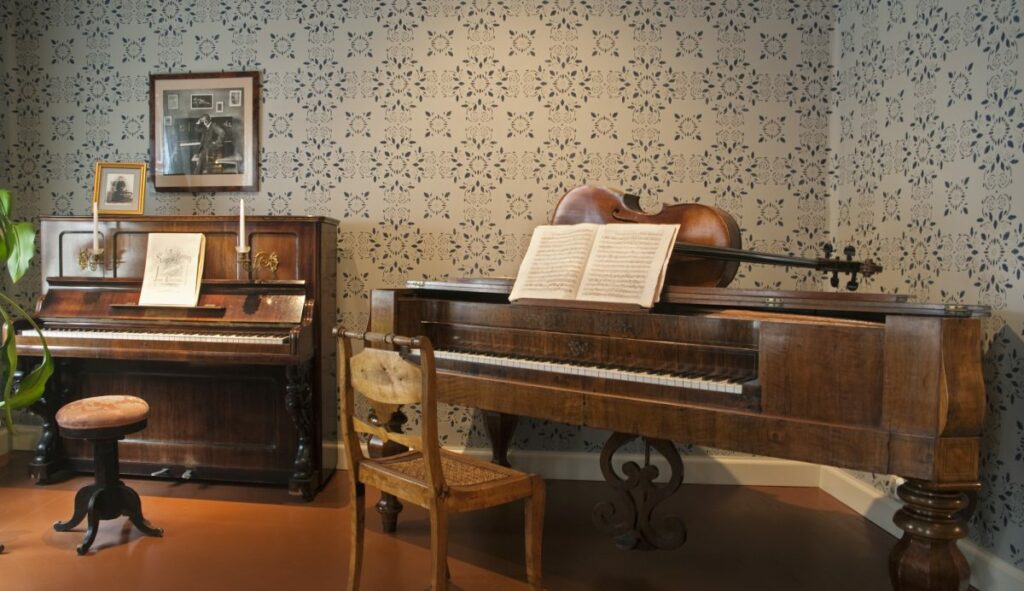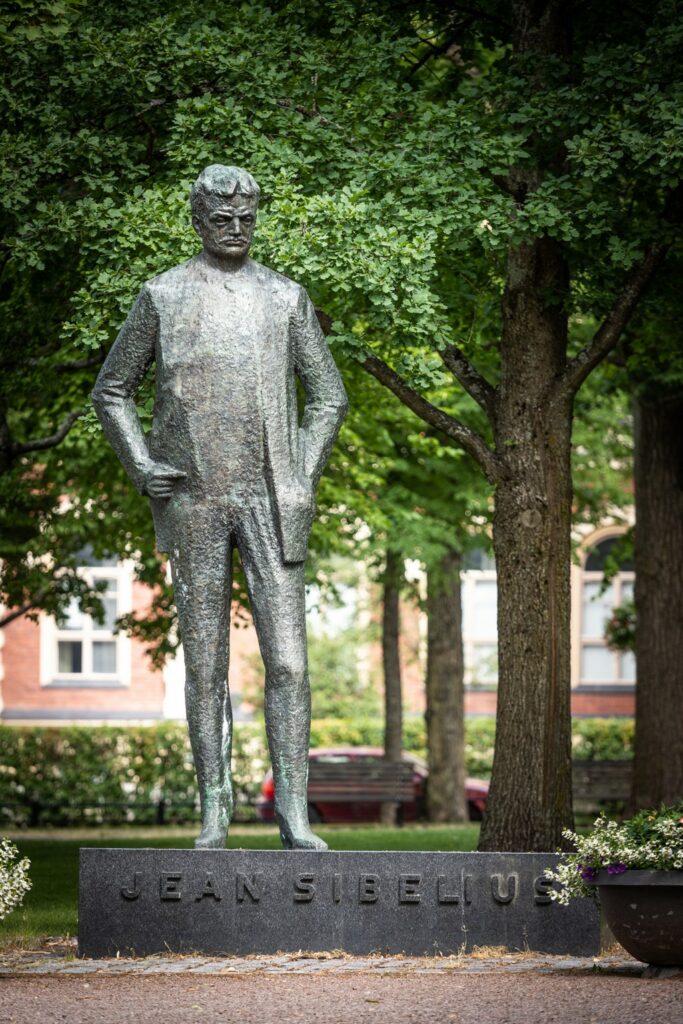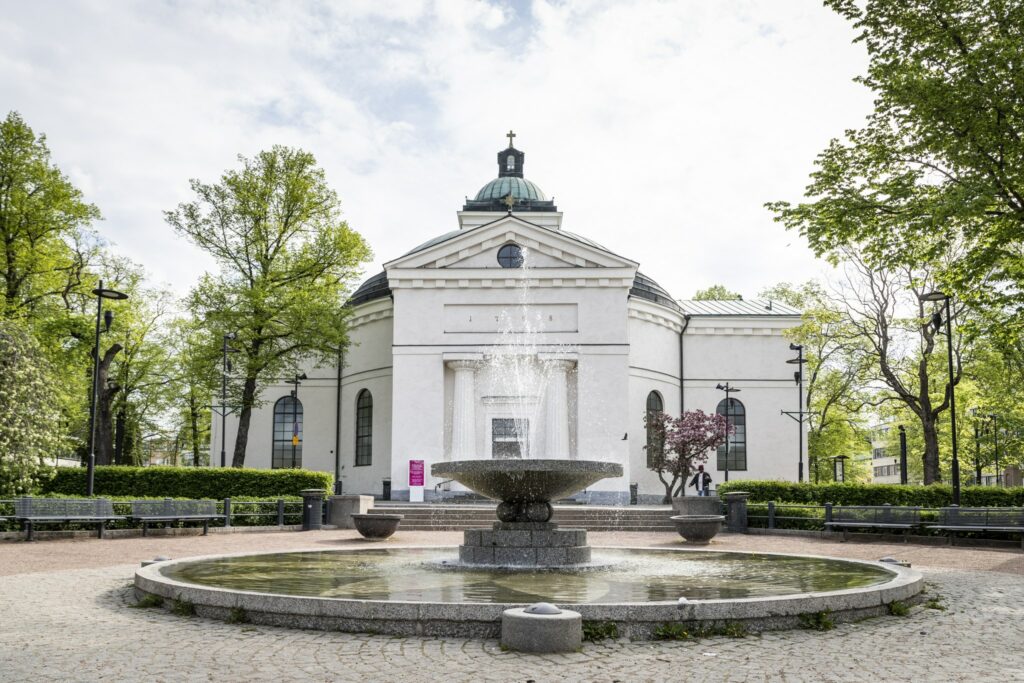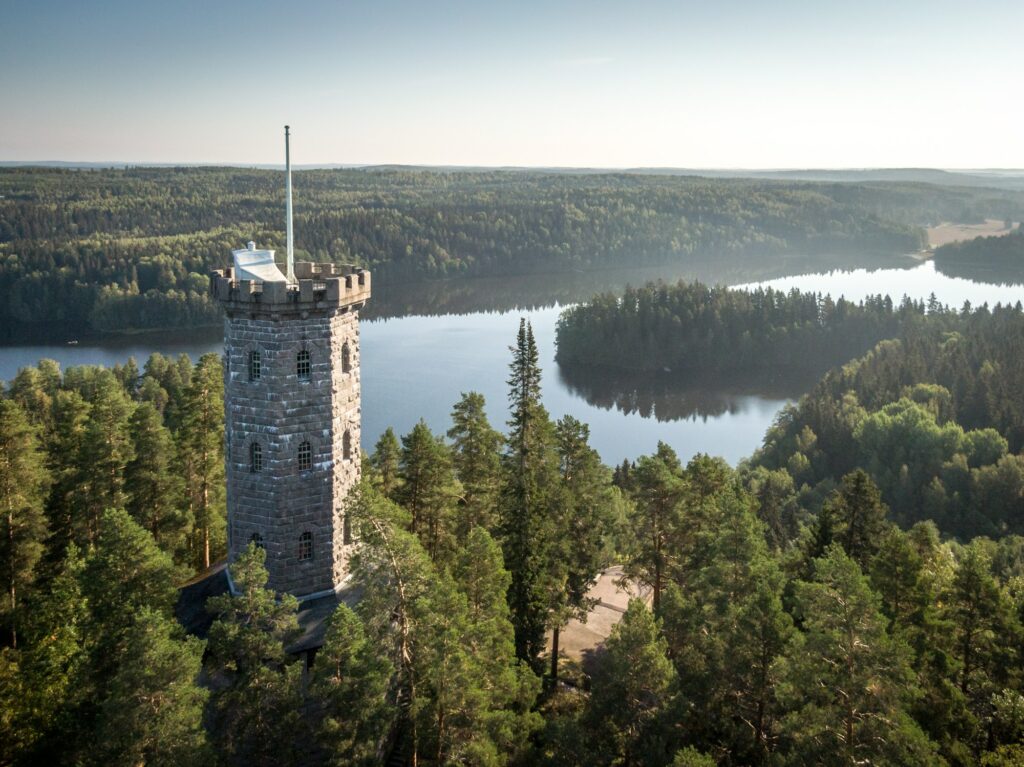Jean Sibelius and Hämeenlinna
Jean Sibelius (1865-1957) is regarded as Finland’s most famous and valued composer. He has left a significant mark in the history of classical music. He captured aspects of Finnish nature, tales and history in his music. Hämeenlinna as the city where Sibelius was born, went to school and made his first compositions, offers great possibilities to learn about the life of our national composer.
Birthplace of Jean Sibelius

Sibelius was born in Hämeenlinna and lived here until he was 20 years old. The house, in which Sibelius was born, was built in 1834 and works today as a museum. Here you can discover the composer’s childhood, youth years and what Hämeenlinna was like at the time. The museum’s decorated rooms are like a time travel to the decades of 1860-1880. The museum also has a museum shop with Sibelius items and small souvenirs.
Sibelius Park and Playing Park Benches
Sibelius Park in the centre of Hämeenlinna -close to the Birthplace of Jean Sibelius- is part of the city’s national urban park and a nice place for a little musical break. Four park benches are motion activated and once you sit down they start playing parts of Sibelius’ “tree cycle” (Cinq morceaux op. 75, 1914-19) and reflect light projections onto a near tree. Sit down and listen to Sibelius’ beautiful piano compositions!

In the centre of the park is Kain Tapper’s bronze statue of Sibelius, which came to the park in 1964. On the west side of the park is a magnificent lyceum building and this was the school where Sibelius went, although the school building was then in the direction where the Sibelius statue is looking. From 1874 onwards, Sibelius used to live just across the park on the Sibeliuksenkatu.
Hämeenlinna Church

Sibelius’ mother and grandmother were very religious, and the family attended church regularly.
The round church in Hämeenlinna was modelled on the Roman Pantheon and built between 1792
and 1798. During Janne’s childhood the altar was still located in the centre of the circular nave.
The church’s unique architecture with its antique references made an impression on the boy and
stimulated his interest in history. The echo of the hymns sung at church can be heard in the music
of Sibelius.
Old Cemetery
In 1859 the composer’s father Christian Sibelius (1821–68) was appointed military and town medical
officer in Hämeenlinna, where he wed in 1862. His grave can be found in the Old Cemetery, which
was decommissioned in 1873 and is today a park.
Ahvenisto Cemetery
Most members of the composer’s childhood family are buried in the Borg family grave in section 28 of
Ahvenisto Cemetery: his grandmother Katarina, mother Maria, sister Linda, uncle Axel and aunts Julia and
Thekla. Bandmaster Gustaf Levander, who taught the young Sibelius violin, is also buried in the cemetery.
Sibelius Forest

Young Sibelius was drawn to nature. He enjoyed exploring the beautiful scenery of Aulanko and this landscape is said to inspire him in his compositions, the most notable being Finlandia. In 2018, on the east side of Lake Aulangonjärvi, around hundred-hectare conservation area was established under the name of Sibelius Forest. The Forest offers excellent grounds for hiking and being inspired, just as Sibelius was.
Learn more and discover all the possibilities in Aulanko.
Sibelius Tours
Kanta-Hämeen Oppaat organizes Sibelius tours for groups in English, German, Swedish and Russian. These tours need to be booked separately and in advance. They have bus or walking tours available that will take your group to places connected to Sibelius’ youth years in Hämeenlinna. It is a great way to explore the city and the life of Sibelius!
Sibelius Map
View a map of Hämeenlinna with the most important places for Sibelius
